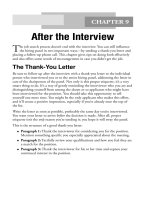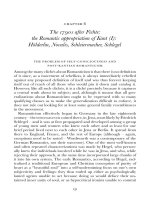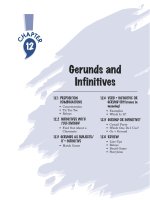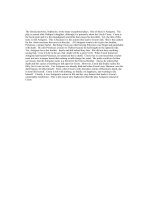Infinitives after auxiliaries
Bạn đang xem bản rút gọn của tài liệu. Xem và tải ngay bản đầy đủ của tài liệu tại đây (13.87 KB, 1 trang )
Infinitives after auxiliaries
The
infinitive
is always used without
to
after the auxiliaries can, could, may, might, must, will, would, shall,
should, do, does and did.
She
can swim.
(NOT She can to swim.) (NOT She can swimming.)
He
must obey
me. (NOT He must to obey me.) (NOT He must obeying me.)
She
should understand
. (NOT She should to understand.) (NOT She should understanding.)
The modal auxiliary
ought
is an exception to this rule. It is followed by an
infinitive with to.
She
ought to behave.
(NOT She ought behave.) (NOT She ought behaving.)
The primary auxiliaries
be
(is, am, are, was and were) and
have
(has, have and had) can be followed by
an
infinitive with to
.
She
is to retire
next year. (NOT She is retire next year.)
He
has to pay
the fine. (NOT He has pay the fine.)
The modal auxiliaries
need
and
dare
can be followed by an infinitive with or without to. The grammar is different.
In questions and negatives
need
is usually followed by an infinitive without to. In affirmative sentences,
need
is
usually followed by an infinitive with to.
Need I wait
any longer?
Need I consult
a specialist?
You
need not wait
any longer.
You
need not consult
a specialist.
You
need to wait
for an hour or two. (More natural than ‘You need wait for an hour or two.’)
You
need to consult
a specialist.
When
need
is followed by an infinitive with
to
, we make questions and negatives with
do.
You
need to sign
these papers.
Do
I
need to sign
these papers? OR
Need I sign
these papers? (NOT Need I to sign these papers?)
You
don’t need to sign
these papers. OR You
need not sign
these papers. (NOT You need not to sign
these papers.)
Be first to know when grammar rules change! Sign up to our newsletter here: englishgrammar.org (It's free)
Powered by TCPDF (www.tcpdf.org)









